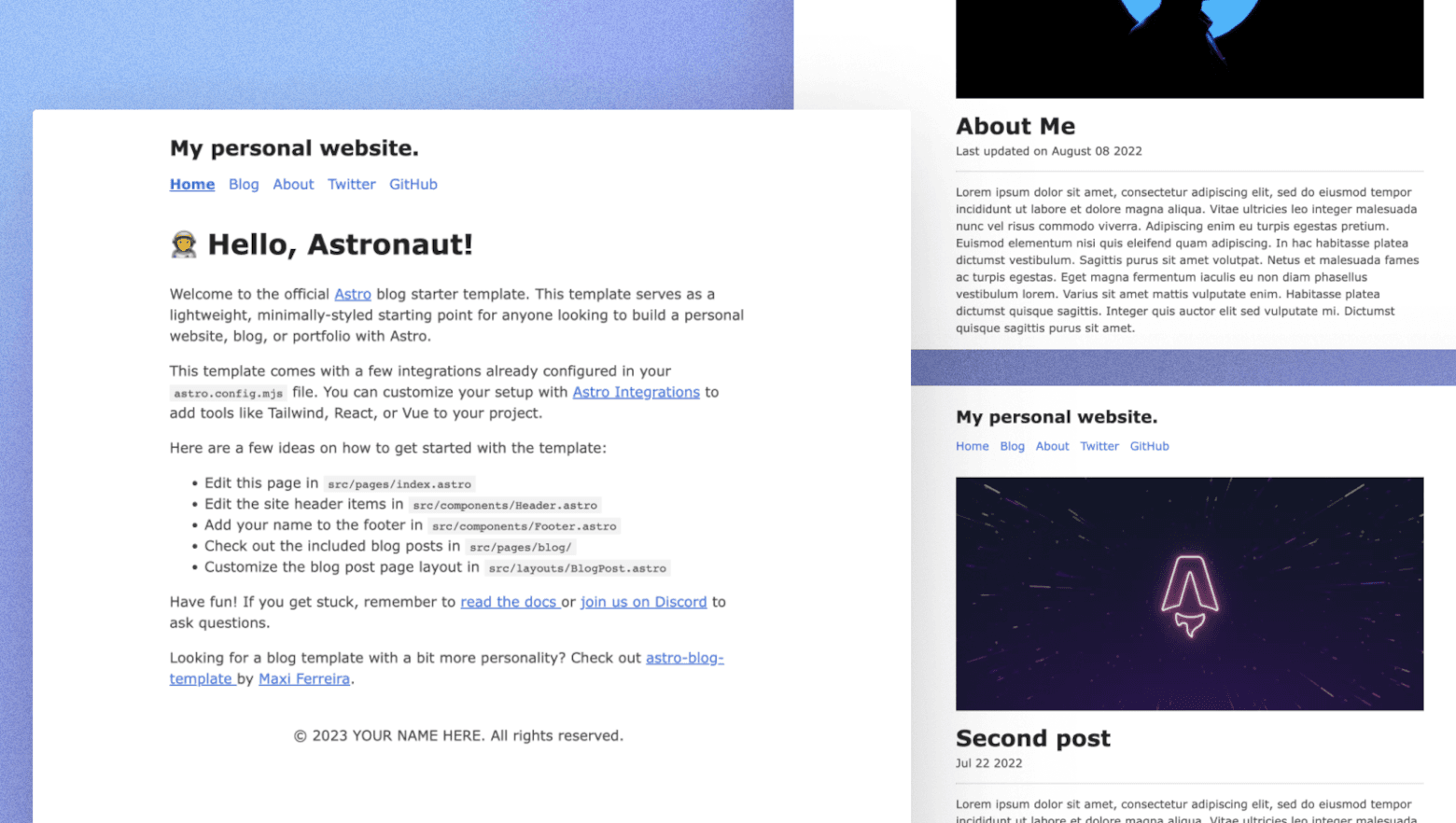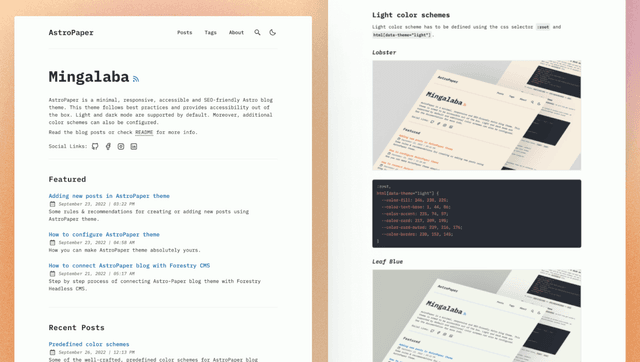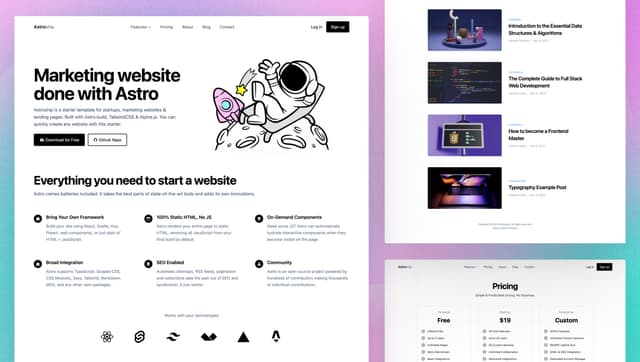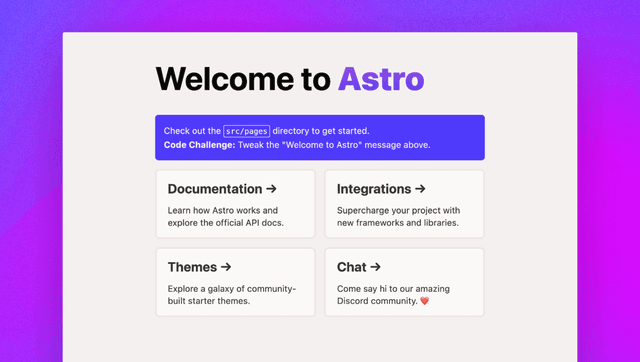
Astro Starter Kit: Blog
🧑🚀 Seasoned astronaut? Delete this file. Have fun!
Features:
- ✅ Minimal styling (make it your own!)
- ✅ 100/100 Lighthouse performance
- ✅ SEO-friendly with canonical URLs and OpenGraph data
- ✅ Sitemap support
- ✅ RSS Feed support
- ✅ Markdown & MDX support
🚀 Project Structure
Inside of your Astro project, you'll see the following folders and files:
Astro looks for .astro or .md files in the src/pages/ directory. Each page is exposed as a route based on its file name.
There's nothing special about src/components/, but that's where we like to put any Astro/React/Vue/Svelte/Preact components.
The src/content/ directory contains "collections" of related Markdown and MDX documents. Use getCollection() to retrieve posts from src/content/blog/, and type-check your frontmatter using an optional schema. See Astro's Content Collections docs to learn more.
Any static assets, like images, can be placed in the public/ directory.
🧞 Commands
All commands are run from the root of the project, from a terminal:
| Command | Action |
|---|---|
npm install | Installs dependencies |
npm run dev | Starts local dev server at localhost:4321 |
npm run build | Build your production site to ./dist/ |
npm run preview | Preview your build locally, before deploying |
npm run astro ... | Run CLI commands like astro add, astro check |
npm run astro -- --help | Get help using the Astro CLI |
👀 Want to learn more?
Check out our documentation or jump into our Discord server.
Credit
This theme is based off of the lovely Bear Blog.


